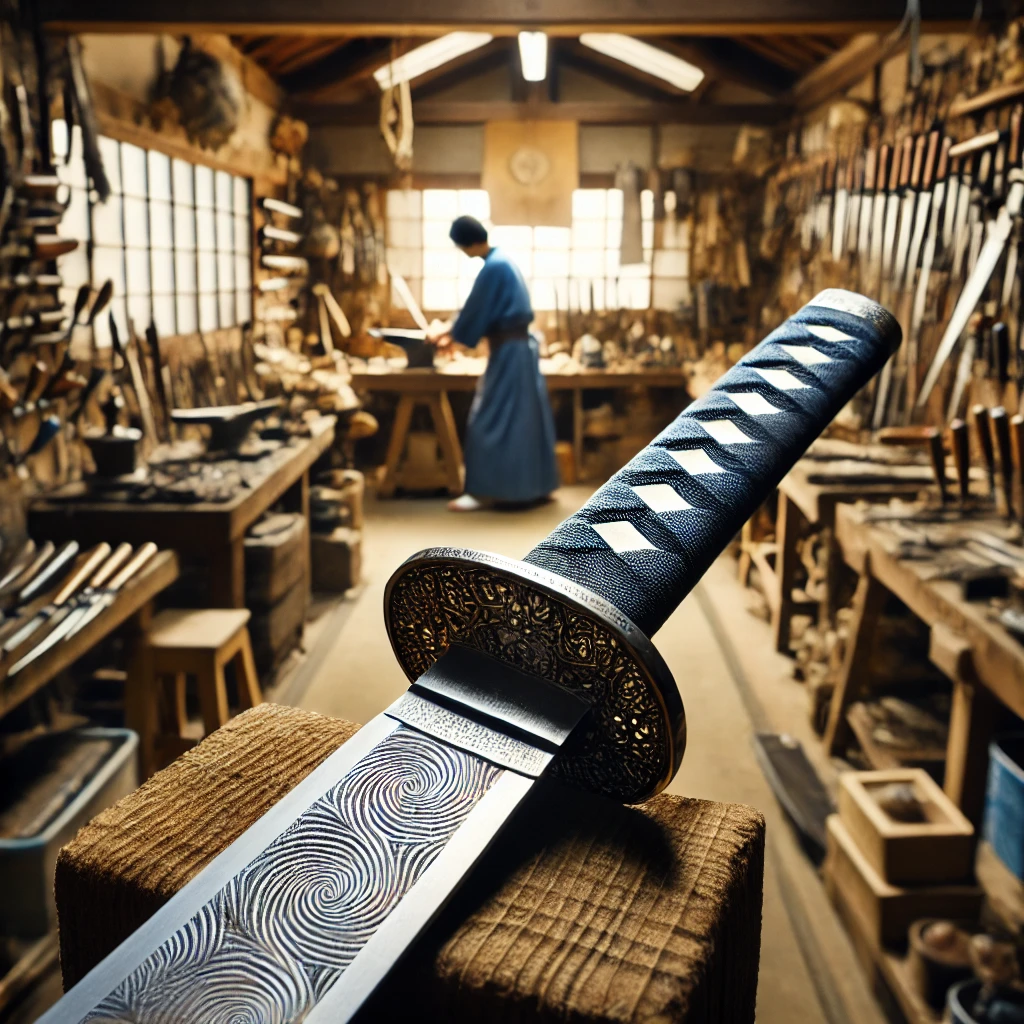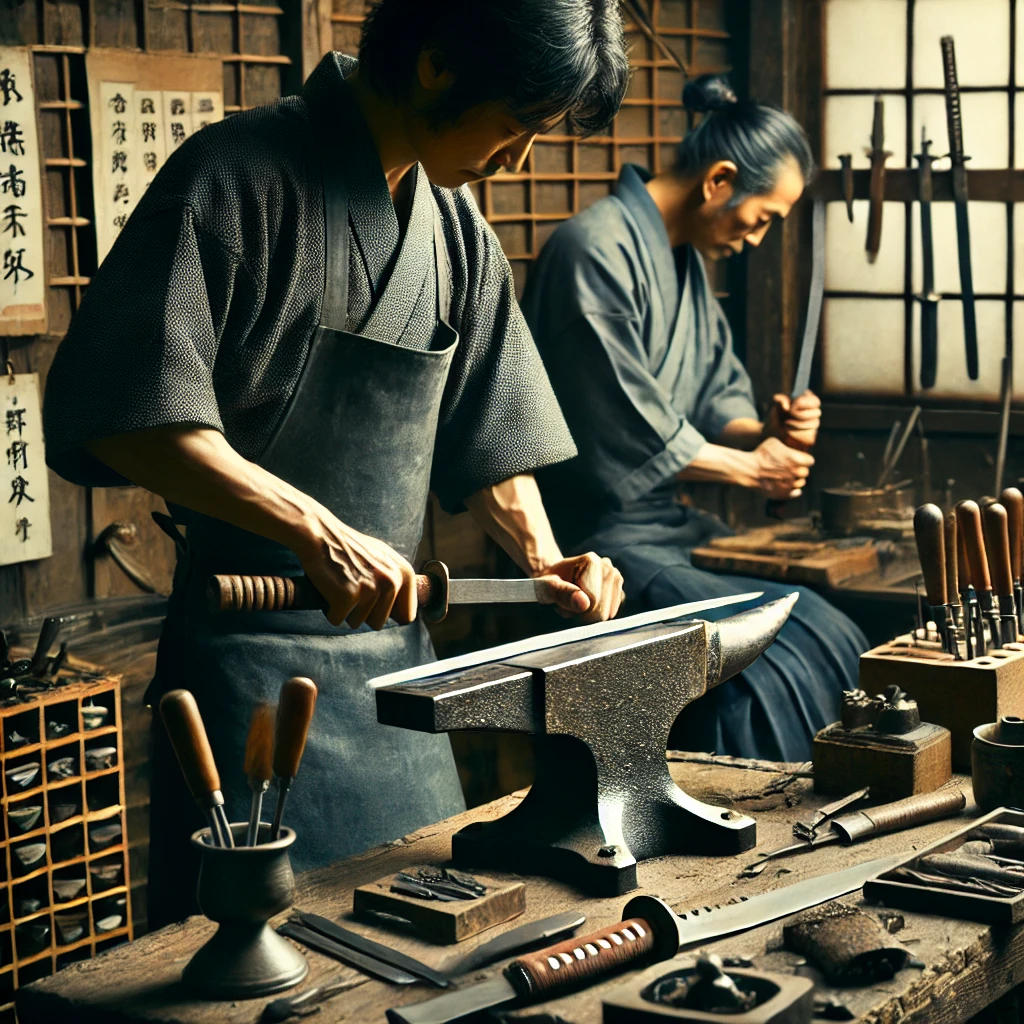The creation of a samurai sword, or katana, is a process steeped in tradition, skill, and artistry. This ancient craft, developed over centuries in Japan, involves meticulous attention to detail and an understanding of metallurgy that has been passed down through generations of swordsmiths. This article delves into the intricate process of crafting a traditional katana, highlighting the key steps and the symbolic importance of this revered weapon.

I. The Swordsmith’s Workshop
The journey of a katana begins in the swordsmith’s workshop, a place where ancient techniques meet modern dedication. The workshop is equipped with specialized tools and materials, each playing a crucial role in the sword-making process. Traditional tools include hammers, anvils, and forge bellows, all essential for shaping and refining the steel.
II. Selecting and Preparing the Steel
The first step in making a katana is selecting the right type of steel. Japanese swordsmiths traditionally use tamahagane, a type of high-carbon steel produced from iron sand. The tamahagane is heated in a tatara, a clay furnace, to produce steel with varying carbon content. The swordsmith then selects pieces with the appropriate balance of hardness and flexibility.
The steel is broken into small pieces, sorted, and stacked to create a billet. This billet is then heated in the forge until it reaches a red-hot state, making it malleable for the next stage of the process.
III. Folding the Steel
One of the defining features of a katana is the distinctive grain pattern on the blade, known as hada. This pattern is created through a process called folding. The billet is hammered flat, folded back onto itself, and hammered again. This process is repeated multiple times, often up to 15 or 20 folds, resulting in thousands of layers of steel. Folding helps to purify the steel by removing impurities and distributing carbon more evenly throughout the metal, which enhances the blade’s strength and flexibility.
IV. Forging the Blade
Once the steel has been folded to the desired extent, the swordsmith begins to forge the blade. The billet is elongated and shaped using hammers and anvils, gradually taking on the characteristic curved form of the katana. This curvature is achieved by differential heating and cooling techniques. The back of the blade is coated with a thicker layer of clay, while the edge is coated with a thinner layer. When the blade is heated and then quenched in water, the edge cools more quickly than the back, creating the katana’s iconic curve.
V. Forming the Hamon
The hamon is the distinctive temper line that runs along the edge of the katana. It is a result of the differential hardening process and is highly prized for its aesthetic beauty as well as its indication of the blade’s quality. The pattern of the hamon is influenced by the application of the clay during the tempering process. Each swordsmith has their unique style, resulting in a variety of hamon patterns that can be used to identify the maker and the school of sword-making.
VI. Polishing the Blade
After the blade is forged and hardened, it is handed over to a skilled polisher. Polishing a katana is an art in itself, requiring precision and patience. The polisher uses a series of increasingly fine whetstones to grind and polish the blade, revealing the intricate patterns of the steel and the hamon. This process can take several weeks, as the polisher works to enhance the blade’s sharpness and aesthetic beauty.
VII. Assembling the Sword
Once the blade is polished, it is fitted with its handle (tsuka), guard (tsuba), and scabbard (saya). These components are often elaborately decorated and made from high-quality materials such as ray skin, silk, and lacquered wood. The tsuka is wrapped with ito, a type of cord, to provide a secure grip. The tsuba is not only functional but also an opportunity for artistic expression, often featuring intricate designs and motifs.
VIII. Symbolic and Cultural Significance
The process of making a katana is deeply symbolic and reflects the spiritual and cultural values of the samurai. Each stage of the process, from selecting the steel to the final polishing, is performed with a sense of reverence and dedication. The katana is seen as an extension of the samurai’s soul, embodying virtues such as honor, discipline, and loyalty. The blade’s sharpness and beauty are not just a testament to the swordsmith’s skill but also a reflection of the samurai’s inner strength and moral integrity.

IX. Conclusion
The creation of a traditional katana sword is a profound blend of art, science, and spiritual practice. The meticulous craftsmanship and centuries-old techniques result in a weapon that is not only a formidable tool of war but also a symbol of cultural heritage and personal honor. The katana stands as a timeless reminder of the rich history and enduring values of the samurai.
Through these images and detailed explanations, we gain a deeper appreciation for the intricate process and the profound significance of the samurai sword in Japanese culture.